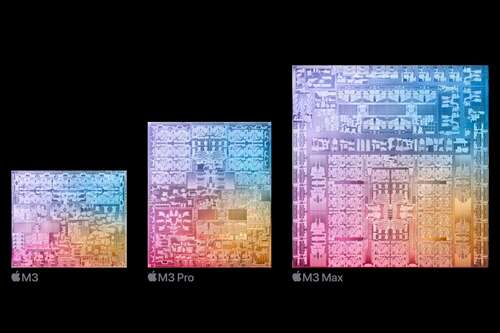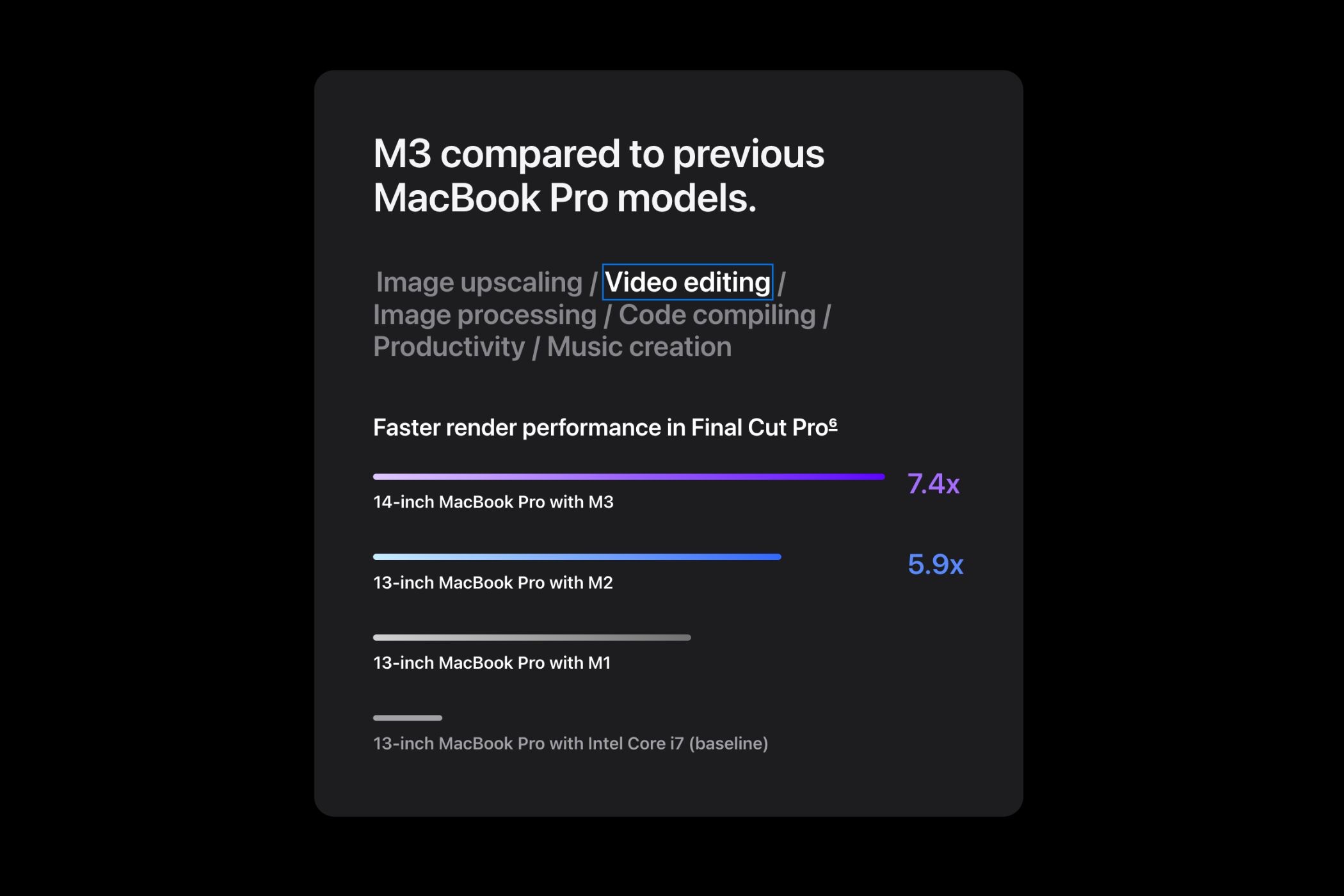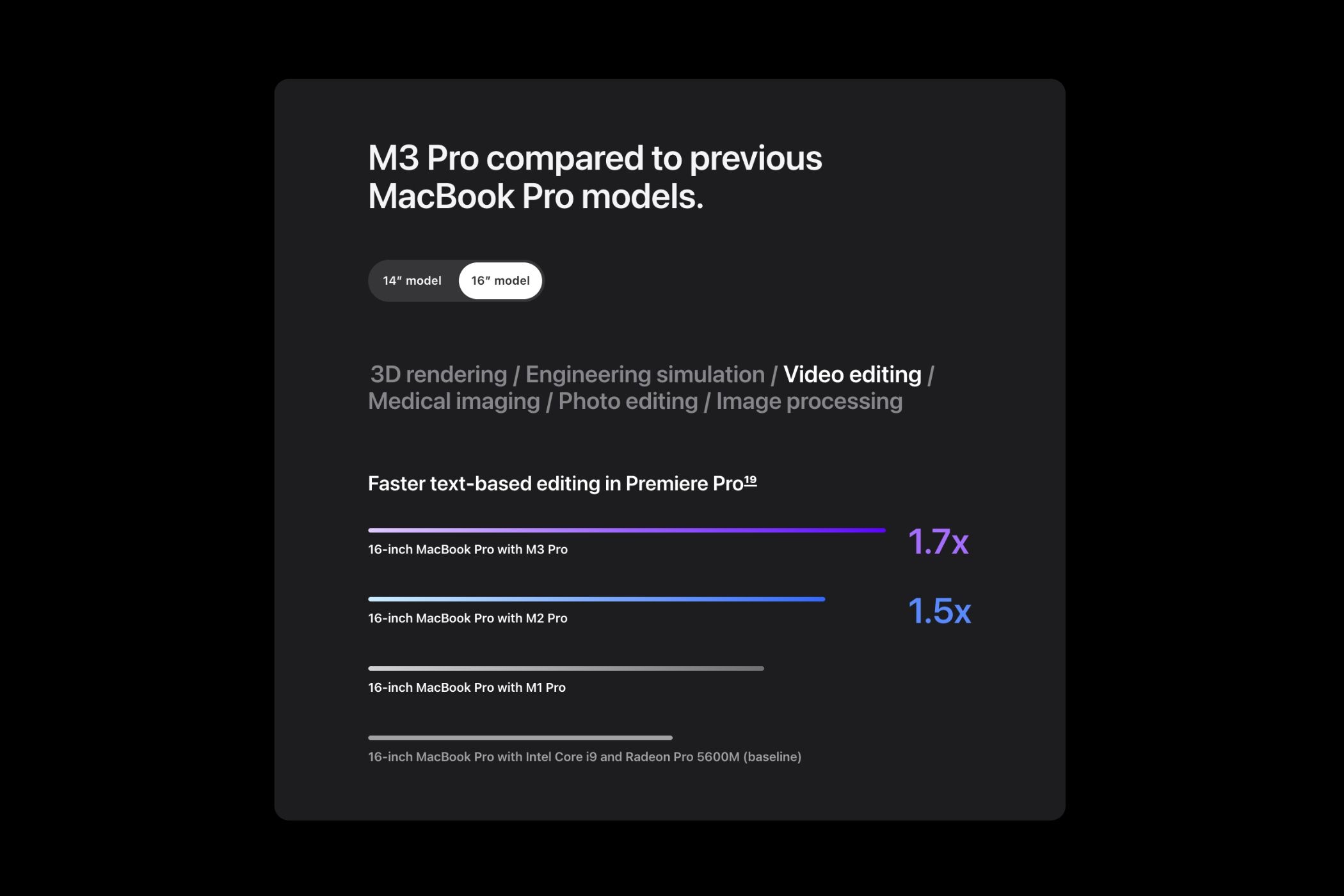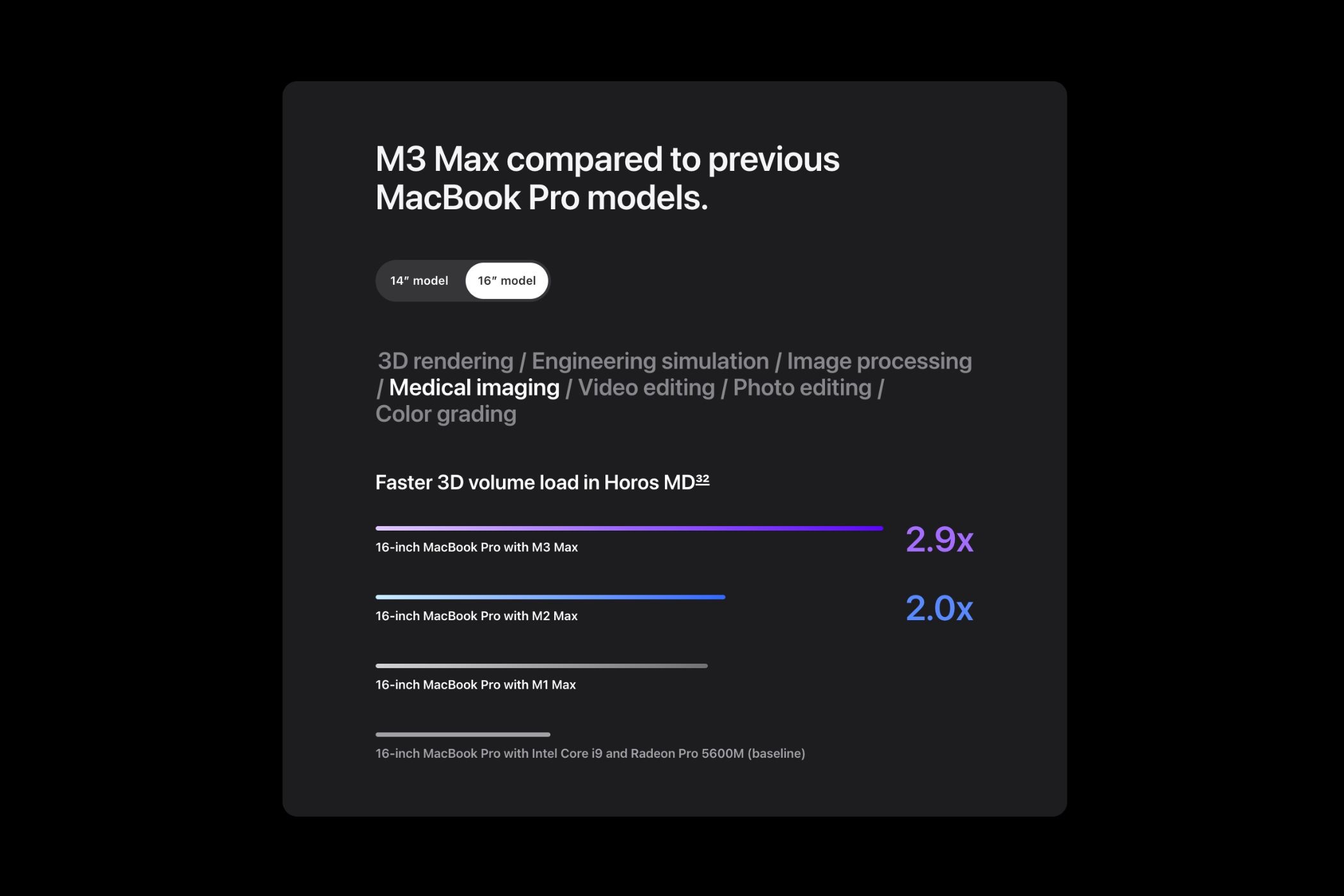Key Takeaways
- Apple’s M3 chips are the fastest yet, offering improved performance and efficiency with their 3-nanometer technology.
- The M3 is the baseline processor, perfect for everyday tasks, with an impressive battery life of up to 22 hours.
- The M3 Pro is designed for creative professionals, providing more power and memory options, while the M3 Max is a performance beast for extreme workflows.
So you’re planning to get a new M3 MacBook but can’t execute which one is right for you. The biggest differences in both price and performance come from the three chips in the M3 lineup—the M3, the M3 Pro, and the M3 Max. Let’s take a look at them to see which suits your needs.
Apple’s M3 Chips Are the Fastest Yet
The third generation of Apple’s in-house chipsets consists of the M3, M3 Pro, and M3 Max models. All of these are based on TSMC’s 3-nanometer (nm) technology, which makes them more powerful and efficient than their predecessors.
As the name suggests, the M3 is the baseline processor with enough power to handle basic workflows. On the other hand, the M3 Pro provides enough bandwidth for creative professionals who need more performance for several layers or videos, complex 3D designs, or detailed ground plans. The M3 Max, on the other hand, packs enough horsepower to train AI models.
In our M3 vs. M2 comparison, we saw that the regular M3 and M3 Max offer more meaningful improvements over the previous generation, whereas the M3 Pro is an incremental upgrade at best. However, if you’re getting your first MacBook, you need more details about how the three chipsets contrast and which would be the best for you.
Apple M3: The Everyday Chip
Starting with the M3, it comes with an eight-core CPU with a balance of performance and efficiency cores. encourage, the chip has a 10-core GPU and a 16-core Neural Engine. With uphold for 100GB/s memory bandwidth and one external display (up to 6K resolution at 60Hz), the M3 is the company’s new baseline chip in the latest iMac and MacBook Pro models.
Apple’s M3 is still an entry-level chip designed for everyday tasks such as browsing the web, checking email, using word-processing apps, playing music, and consuming content. However, it does everything so efficiently that your MacBook would last for up to 22 hours on a single charge.
Apple’s M3 is currently available on the 14-inch and 16-inch MacBook Pro models, where you can configure the memory and storage up to 24GB and 2TB, respectively. The most affordable M3 MacBook Pro model, with a 14-inch Liquid Retina XDR display alongside 8GB of unified memory and 512GB of SSD, for $1,599, is a bit too steep for an entry-level chip.
Even though the M3 MacBook Pro is an excellent day-to-day computer with higher memory and storage options, there are two reasons why I would propose waiting for the M3 MacBook Air models that are expected in 2024. First, the M3 MacBook Air would be much more affordable than the MacBook Pro with the same chipset. Second, it would offer all the hardware you need to carry out light tasks.
Apple M3 Pro: The Creator’s Friend
Apple’s M3 Pro comes in two configurations. The base variant ships with an 11-core CPU and a 14-core GPU, whereas the higher trim offers a 12-core CPU and an 18-core GPU. Although the processor has the same Neural Engine as the regular M3, it provides 150GB/s memory bandwidth, which is 50% more.
uphold for external monitors also goes up to two 6K screens at 60Hz instead of one on the M3. Depending upon your monitors or use case, you can connect one 6K monitor over Thunderbolt and one 4K monitor with a 144Hz refresh rate over HDMI. If you want an even higher resolution, the M3 Pro supports one 8K monitor at 60Hz. On the other hand, if refresh rate is your priority, you can also output to a 4K screen at 240Hz.
The M3 Pro is for users with demanding workflows appreciate coders, researchers, or creative professionals such as photo or video editors, graphic designers, or animators. It also supports up to 36GB of unified memory and 4TB of SSD storage, giving you extra headroom for heavy tasks.
Unlike the base M3 MacBook Pro, the M3 Pro version of the MacBook Pro comes with a dual-fan cooling system for maintaining optimum temperature under heavy workloads. encourage, the latter has three Thunderbolt 4 ports with one HDMI port and an SDXC card slot, instead of just two Thunderbolt 3 ports, to ease higher transfer speeds.
The most affordable MacBook Pro with the M3 Pro chipset with 18GB of unified memory and 512GB of SSD storage, and a 14-inch Liquid Retina XDR display, costs $1,999. In my opinion, the M3 Pro MacBook Pro is more worthy of the “Pro” title than the M3 MacBook Pro. For heavy multitasking, better performance, or casual gaming, for that matter, the M3 Pro is your pick.
Apple M3 Max: The Performance Beast
Apple’s top-of-the-line M3 Max chipset offers unmatched specifications. It comes in two models. The base variant has a 14-core CPU and 30-core GPU and ships with 36GB of unified memory. Meanwhile, the top trim has a 16-core CPU, a 40-core GPU, and 48GB of unified memory. These numbers explain that the M3 Max offers more graphical prowess than the M3 Pro.
While the lower-spec M3 Max provides 300GB/s memory bandwidth, the top-tier variant offers 400GB/s, encourage improving the rate at which the process can store and read data. Regarding external displays, the M3 Max rules over all the other models. Whether you want high resolution or a higher refresh rate, the processor has got you covered.
It can output to four external displays at once when you’re using three 6K screens at 60Hz over Thunderbolt and one with 4K resolution at 144Hz over HDMI. In another configuration, the chipset can also relay video to two 6K screens at 60Hz via Thunderbolt and one 8K display at 60Hz over HDMI.
With all the extra processing and graphics cores, Apple says that the M3 Max (on a 14-inch MacBook Pro) is about 98% faster at 3D rendering, 42% faster at engineering simulation, and 29% quicker at video editing in Premiere Pro, than the M3 Pro (on a 14-inch MacBook Pro).
Nearly matching the performance of the powerful M2 Ultra, the M3 Max enables extreme workflows, appreciate video production with cinematic editing, training AI models using machine learning programs, running simulations, coding apps, analyzing a highly complex data set, and more.
The baseline M3 Max is available in the $3,199 14-inch MacBook Pro with 36GB of unified memory and 1TB SSD, while the top-tier variant is available in the $3,999 16-inch MacBook Pro with 48GB of unified memory and 1TB SSD storage. The chipset is configurable for up to 128GB of memory and an 8TB SSD.
Get the M3 Chip That Best Suits Your Requirements
Now you know everything about the new M3 processors: how many models there are, the differences, and most importantly, which is the ideal variant for you. The base M3 is the everyday chip that’s good enough for most users; the M3 Pro is best for coding or creative work; and the M3 Max is the professional chip for those who need all the power they can get and have the budget for it. select wisely!





